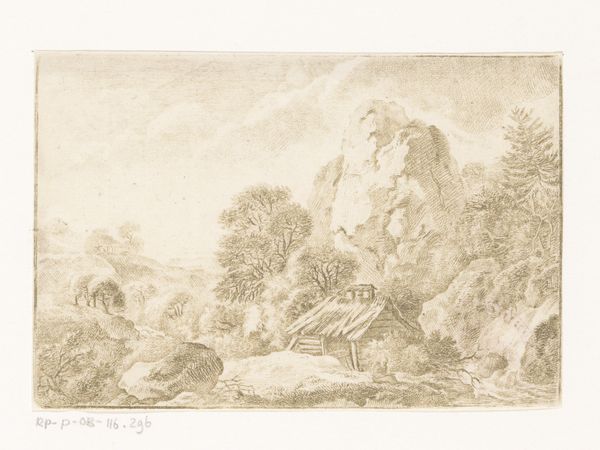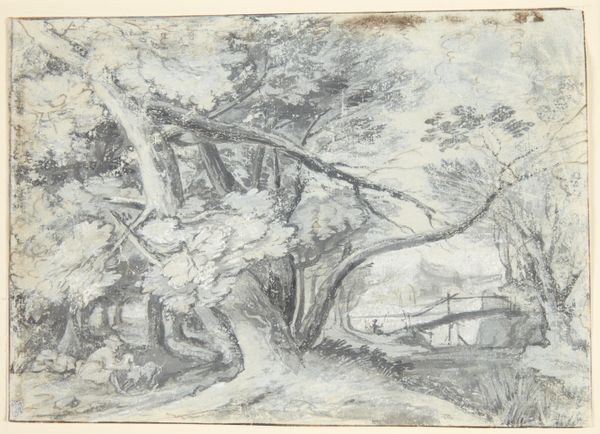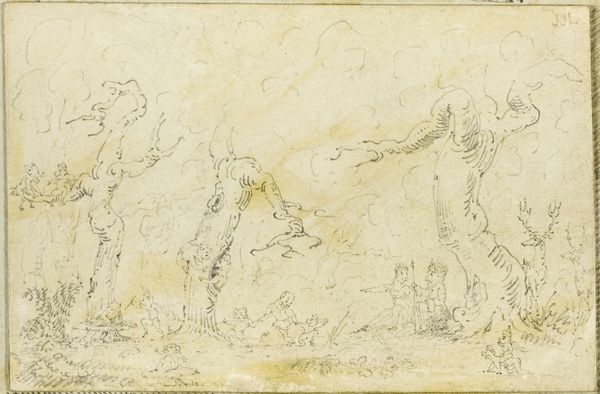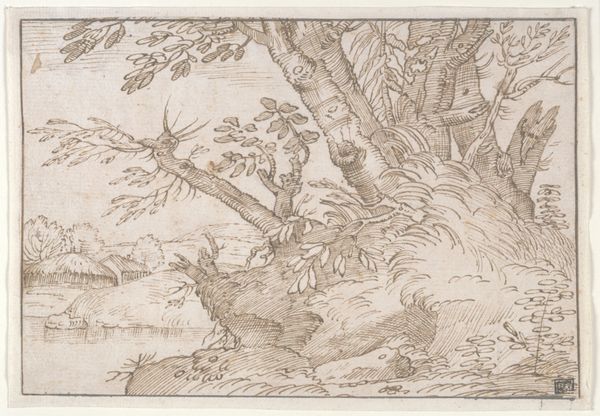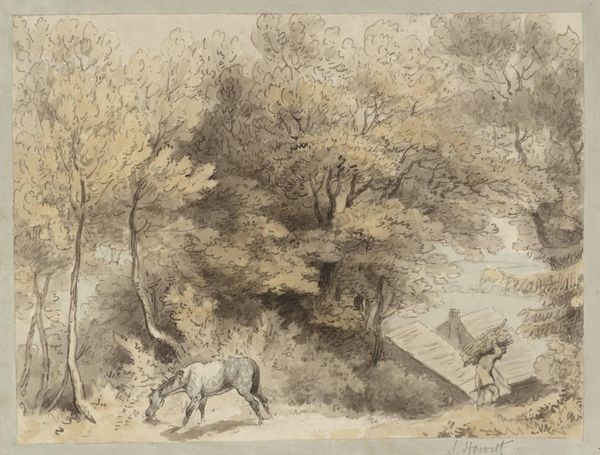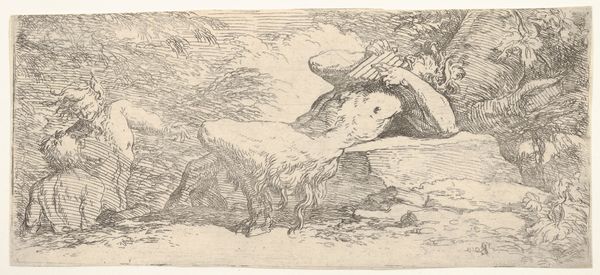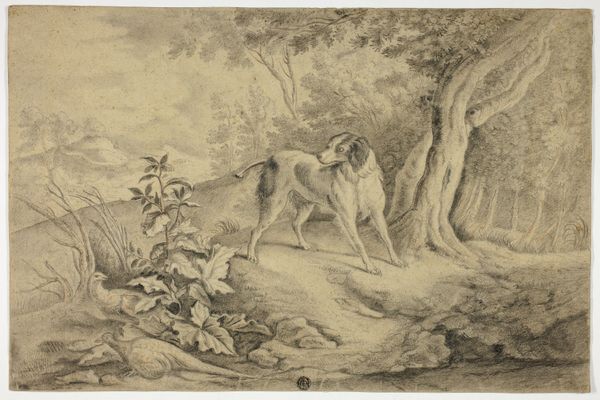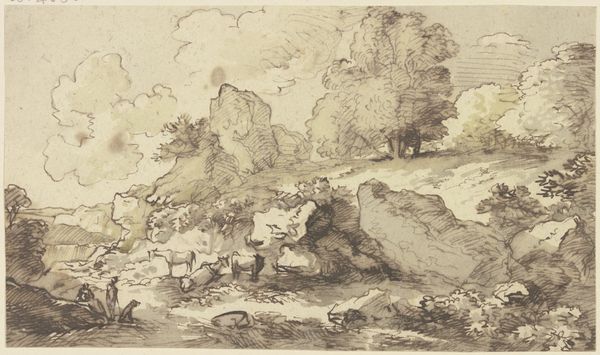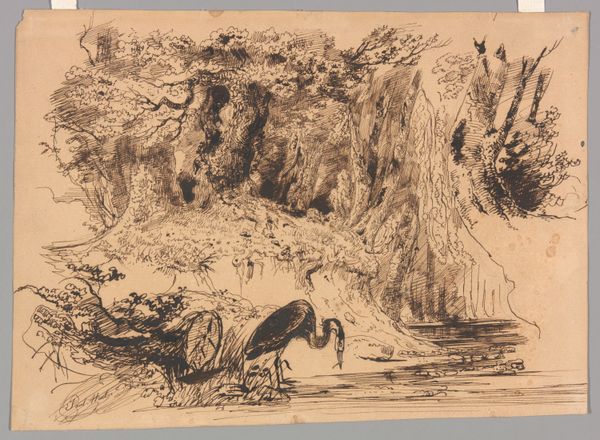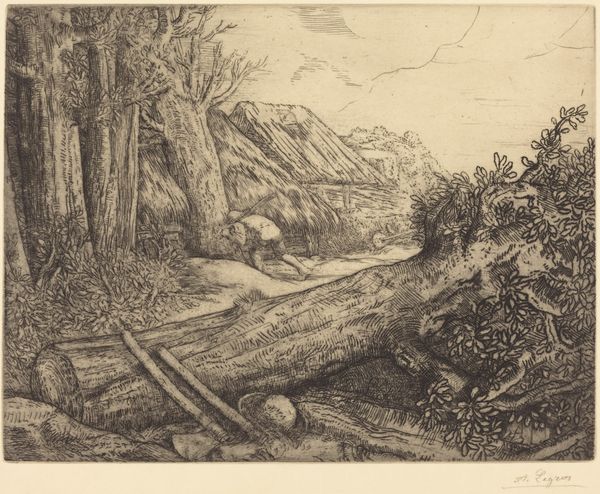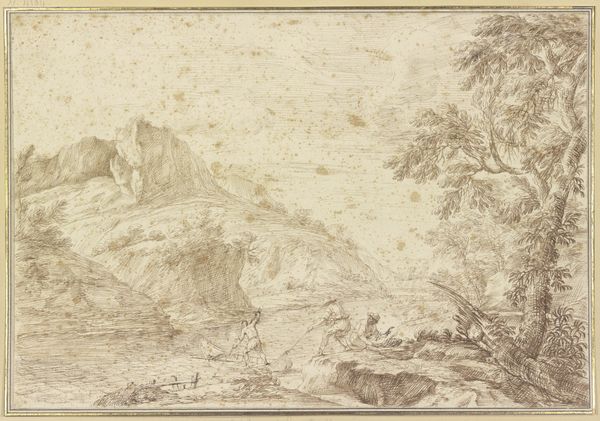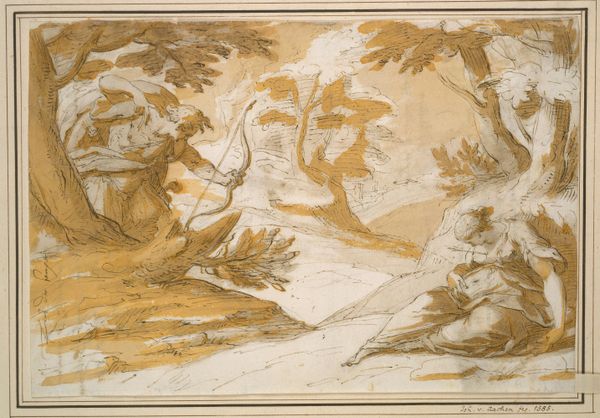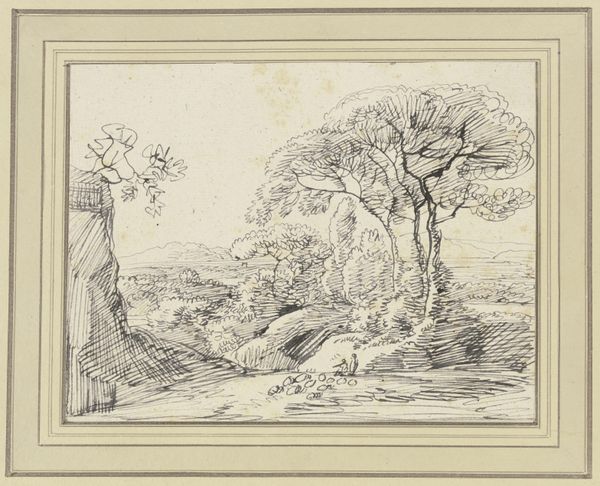
drawing, paper, pencil, chalk, charcoal
#
drawing
#
pencil sketch
#
landscape
#
charcoal drawing
#
paper
#
pencil drawing
#
folk-art
#
romanticism
#
pencil
#
chalk
#
genre-painting
#
charcoal
Dimensions: 332 × 453 mm
Copyright: Public Domain
Curator: This evocative drawing is titled "Shepherd Boy with Lambs in Woods" by George Morland. Though the piece isn’t dated, it provides a window into Morland's Romantic sensibility. What's your initial reaction to the work? Editor: My immediate impression is one of tranquility tinged with a bit of melancholic solitude. The muted tones of the chalk and pencil sketch create a serene atmosphere, yet the boy's isolation sparks a certain pensiveness. Curator: I think you've hit on something important regarding isolation. It reflects a moment where the traditional rural labor narrative romanticizes a simpler existence, all the while eliding the lived experience and very real socioeconomic hardships faced by laboring class children in that period. Editor: I'm interested in the symbolism of the sheep here. Sheep often represent innocence, purity, even Christ himself in Christian iconography. But here, they're also livestock, a source of livelihood. There's a dual representation at play. What does that imply, culturally, during this time? Curator: Excellent point! In terms of broader cultural impact, this romanticized, bucolic imagery acted as a powerful tool within larger social dialogues during the time. Depictions like these upheld hierarchical power structures, sanitizing exploitation to reinforce social norms and roles. Editor: You know, there’s something almost classical about this drawing despite the genre scene—something echoing the idealized past of Arcadia. The careful depiction of light and shadow… is Morland tapping into established visual tropes to enhance that sense of idealized beauty and order? Curator: Precisely. Morland masterfully deploys the aesthetics of Romanticism, consciously leveraging the nostalgia and cultural significance attributed to similar compositions that predated it. The boy's passive pose, the surrounding forest as stage for reflection. It all obscures complex histories. Editor: Thinking about it more, perhaps the work isn't really about sheep. Maybe Morland strategically leverages popular imagery as a device for exploring universal themes of peace, meditation, our relation with the land… Curator: Those layered interpretations absolutely enrich the piece's resonance. Analyzing "Shepherd Boy with Lambs in Woods" beyond its surface aesthetics really helps us examine and unpack the intersection of representation, reality, and power that was being expressed and reinforced during that era. Editor: And now, reflecting on this landscape drawing by George Morland, I’m struck by the intricate balance the piece manages to strike: tranquility versus melancholia, labor versus leisure, symbolism versus lived reality. Curator: Indeed. This image invites us to contemplate art as a medium, and consider how representations can reflect and shape the understanding of lived experience and socioeconomic conditions within their respective social contexts.
Comments
No comments
Be the first to comment and join the conversation on the ultimate creative platform.
